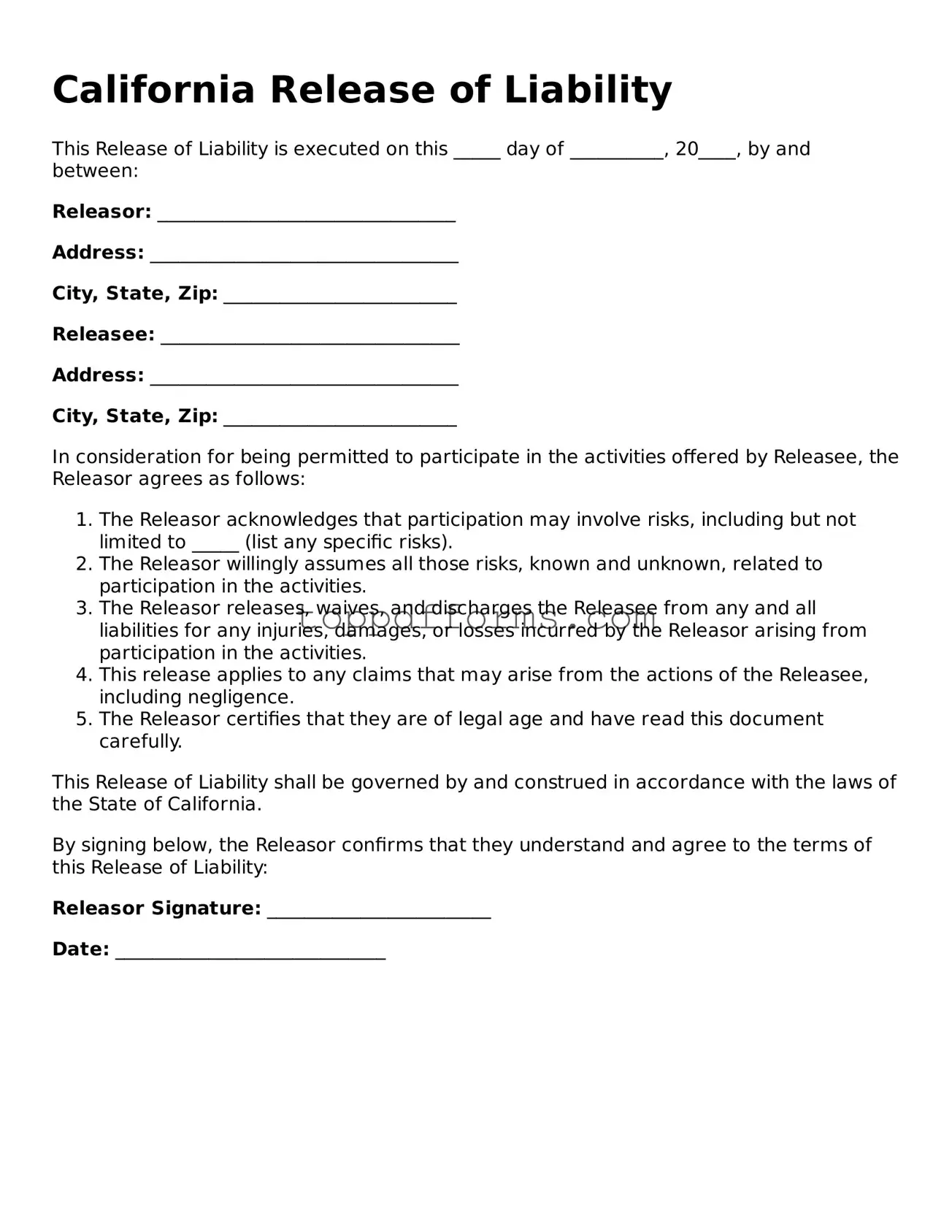What is a California Release of Liability form?
A California Release of Liability form is a legal document that individuals use to waive their right to hold another party responsible for any injuries or damages that may occur during a specific activity. This form is often utilized in situations such as sports events, recreational activities, or other events where there is a risk of injury. By signing this form, participants acknowledge the risks involved and agree not to pursue legal action against the organizers or sponsors if an accident occurs.
Who should use a Release of Liability form?
This form is typically used by organizations, businesses, or individuals who offer activities that carry a risk of injury. Examples include sports leagues, adventure tour companies, and fitness instructors. It is also beneficial for participants engaging in activities where there is a potential for harm, as it clarifies the understanding of risks involved. However, it is important to note that not all situations may be appropriate for a Release of Liability form.
Is a Release of Liability form legally binding in California?
Yes, a properly executed Release of Liability form can be legally binding in California, provided it meets certain criteria. The form must be clear and unambiguous, and it should be signed voluntarily by the participant. Additionally, the language used should be easily understandable. Courts may enforce such agreements unless they are found to be unconscionable or if they violate public policy.
What are the limitations of a Release of Liability form?
While a Release of Liability form can protect against certain claims, it does not shield against all forms of negligence. For instance, if a party is grossly negligent or engages in willful misconduct, the form may not be enforceable. Moreover, specific statutory protections may apply, particularly in cases involving minors or certain regulated activities. It is essential to consult legal guidance to understand the full scope of protection offered by the form.
Can minors sign a Release of Liability form?
Minors cannot legally enter into contracts, including a Release of Liability form, without parental or guardian consent. Typically, a parent or guardian must sign the form on behalf of the minor. This ensures that the minor is protected while also acknowledging the risks associated with the activity. Organizations should ensure that they have a clear process for obtaining parental consent to avoid potential legal issues.
How can I ensure my Release of Liability form is effective?
To create an effective Release of Liability form, it should be comprehensive and tailored to the specific activity. Use straightforward language that participants can easily understand. Include details about the nature of the activity, the risks involved, and the rights being waived. It is advisable to have the form reviewed by a legal professional to ensure compliance with applicable laws and to address any specific concerns related to the activity being conducted.
